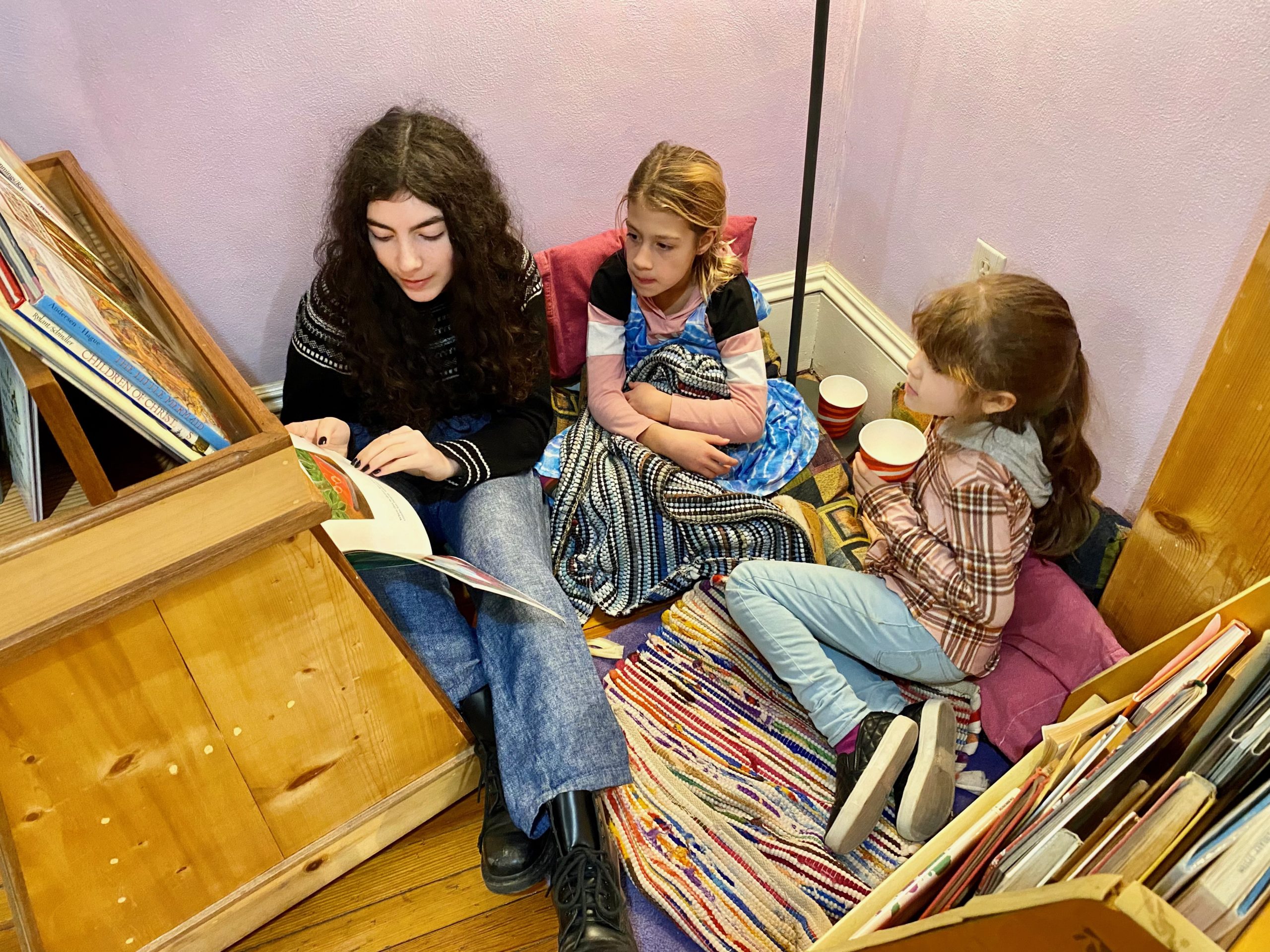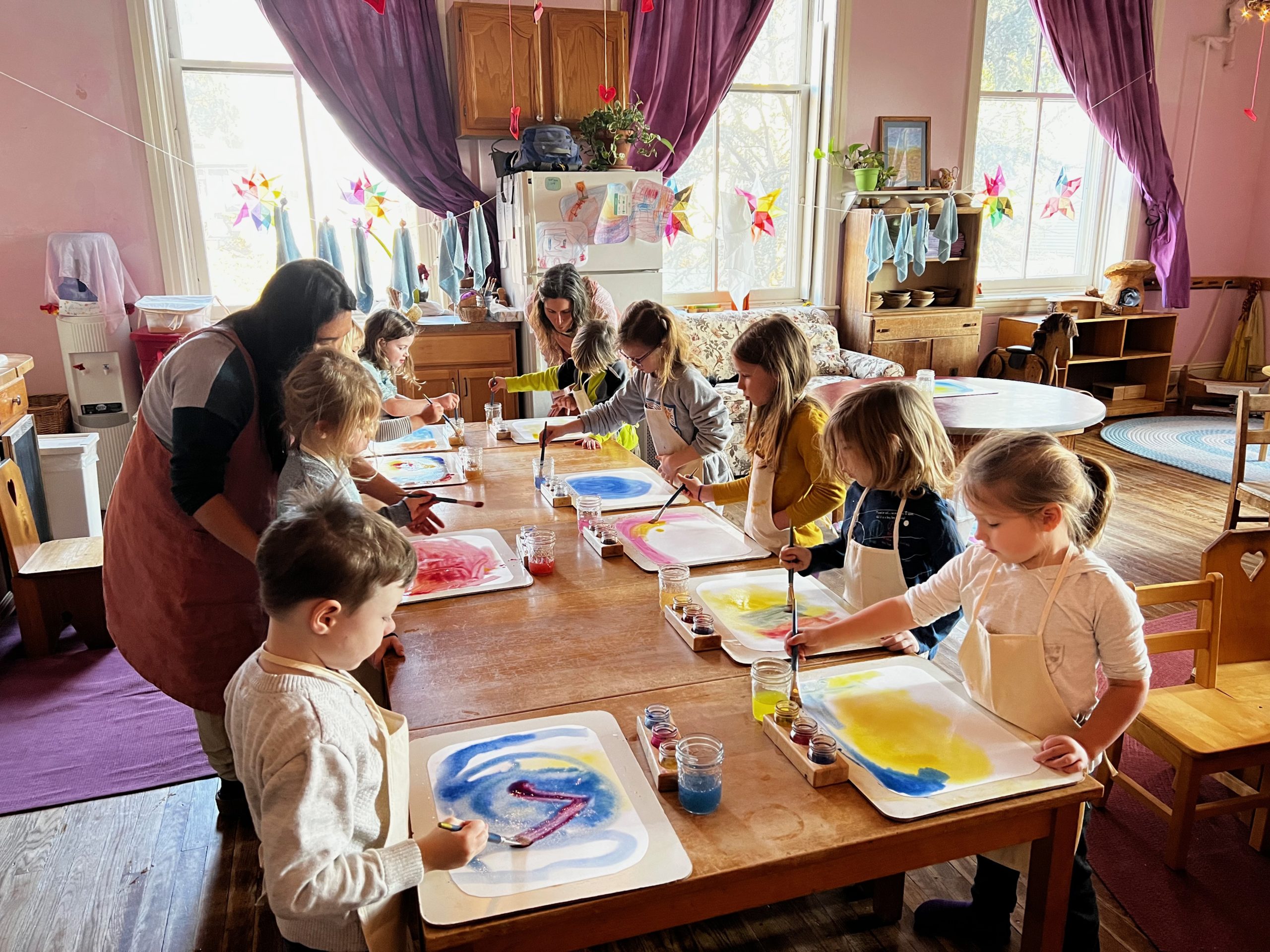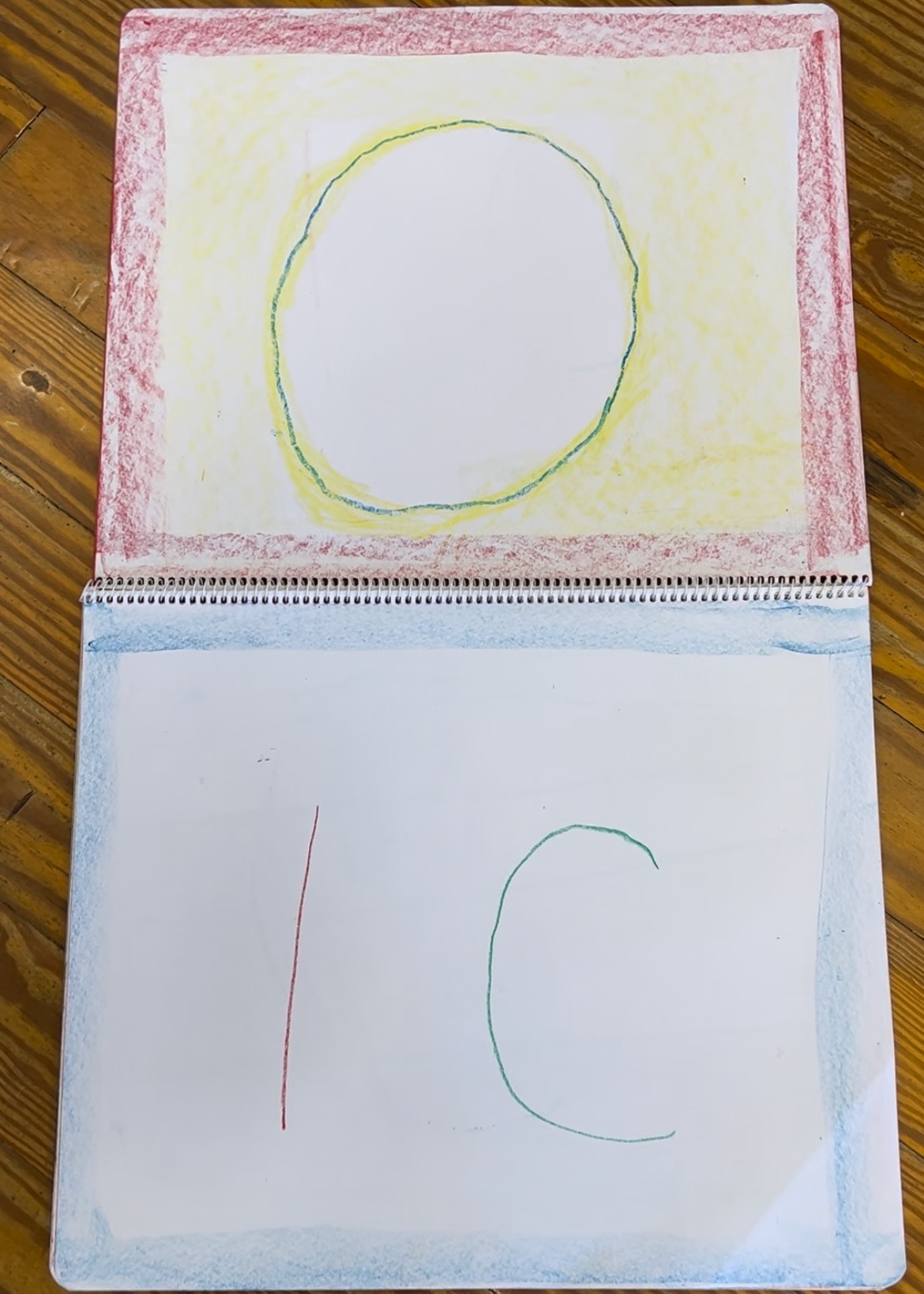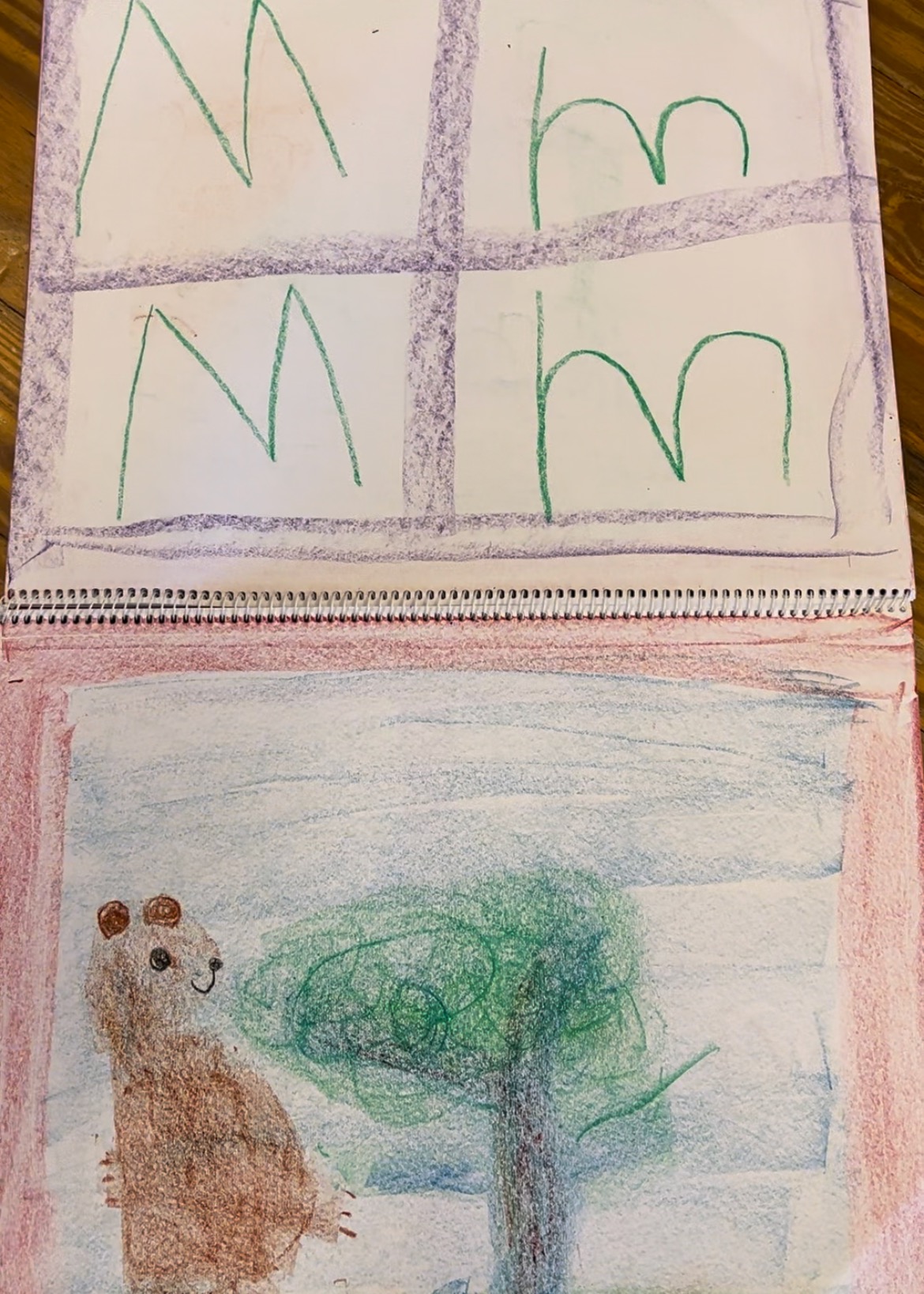Written and compiled by Lisa Sweeney, SWS Co-Pedagogical Chair.

When and how is reading taught in a Waldorf School? This may be the most frequently asked question by parents as they consider Waldorf education. The foundation for literacy begins even before the first grade in the movement, song and verse of the kinder years. Our goal at SWS is to foster passionate readers who continue reading for pleasure throughout their lifetimes. To that end, we introduce reading in a developmentally appropriate way.
“Waldorf education’s approach to reading and writing is different from traditional methods seen in public schools. This has led to a common misconception that Waldorf students are taught reading “late,” but the truth is that Waldorf educators are instead building foundations for reading comprehension before decoding. This leads to a deeper understanding and appreciation of content students read and ultimately enhances comprehension.” AWSNA (The Association of Waldorf Schools of North America)
The following excerpts from Dianne McGaunn’s and Kat Marsh’s research article, How Reading, Writing, Literature, and Language are Taught in a Waldorf School further elucidate this subject.
“A common misconception about Waldorf literacy education is that Waldorf schools do not teach children how to read until second grade. While it is true that decoding (learning how to read through a phonics approach) is not specifically taught until late first or second grade, early childhood educators and first-grade teachers concentrate on building a strong foundation for literacy learning through drama, artistic endeavors, writing what students know by heart, healthy play and movement experiences, beautiful recitation of poetry and many other forms of learning that are multi-sensory experiences. Therefore, when students are taught a traditional phonics approach in second grade, they have a deep foundation to aid in the reading process.”

“Waldorf teachers understand the importance of developing fine and gross motor movement skills for writing and reading. In the early childhood classroom, activities such as cutting food for snacks, drawing with crayons, sewing, and modeling with beeswax help develop fine motor skills for smooth writing experiences.
Other gross movement activities such as cross-lateral skipping help develop the connecting “bridge” of the brain that orchestrates the processes between the left and right hemispheres of the brain, which is not fully developed until seven or nine years of age. This bilateral brain integration is critical for whole-word recognition and decoding words, two essential reading skills.”
“In addition to the importance of healthy movement in brain development and learning, the Waldorf approach to literacy follows the course of literacy development throughout human history: oral learning (speaking and listening), then writing (as in hieroglyphics), and only then reading. This progression and sequence or order of skills (movement, speaking and listening as precursors to reading and writing) supports a child’s development because it strengthens inherent skills aforementioned, and only then introduces writing skills which are the next step toward developing a broad understanding of literacy. Children taught in this sequence have a better understanding of the meaning of print and will come to the task of reading with purpose, comprehension, and confident engagement.”


“Current research supports the idea that teachers can improve reading skills by having students write about what they are reading, teaching them writing skills, and increasing how much they write. In the Waldorf first-grade classroom, writing the letters of the alphabet emerges from daily imaginative stories thus giving students a meaningful basis for linking printed letters with sounds (as in the early relationships to humans with hieroglyphics). Students write simple words that they know, and gradually the skill of writing words and recognizing word families is used to build simple sentences.”
“The Waldorf early grades curriculum is rich in phonological awareness and emphasizes holistic literacy skills along with informal print writing to give students a stronger basis for formal print reading. Literacy development in Waldorf schools cultivates awareness, appreciation, and skill in both the spoken and written word, following a developmentally sound approach that helps to ensure that students claim a love of literature, language, and writing as part of their birthright.”
“In essence, the Waldorf approach to literacy is purposefully patient and thoughtfully builds a foundation for a life-long love of literacy, in its many forms.”
The article quoted above may be accessed in its entirety through the following link: “Early Literacy Learning in Waldorf Education.”
As Waldorf educators, the teachers at Susquehanna Waldorf School love to read and want children to love it too. That’s why we teach reading in a way that is attuned to the child’s physical and mental development. As in the old English song “A Jolly Good Book,” the love of reading is golden.
Oh for a book and a shady nook,
Either indoor or out;
With the green leaves whispering overhead,
Or the street cry all about.
Where I may read all at my ease,
Both of the new and old;
For a jolly good book whereon to look,
Is better to me than gold.
